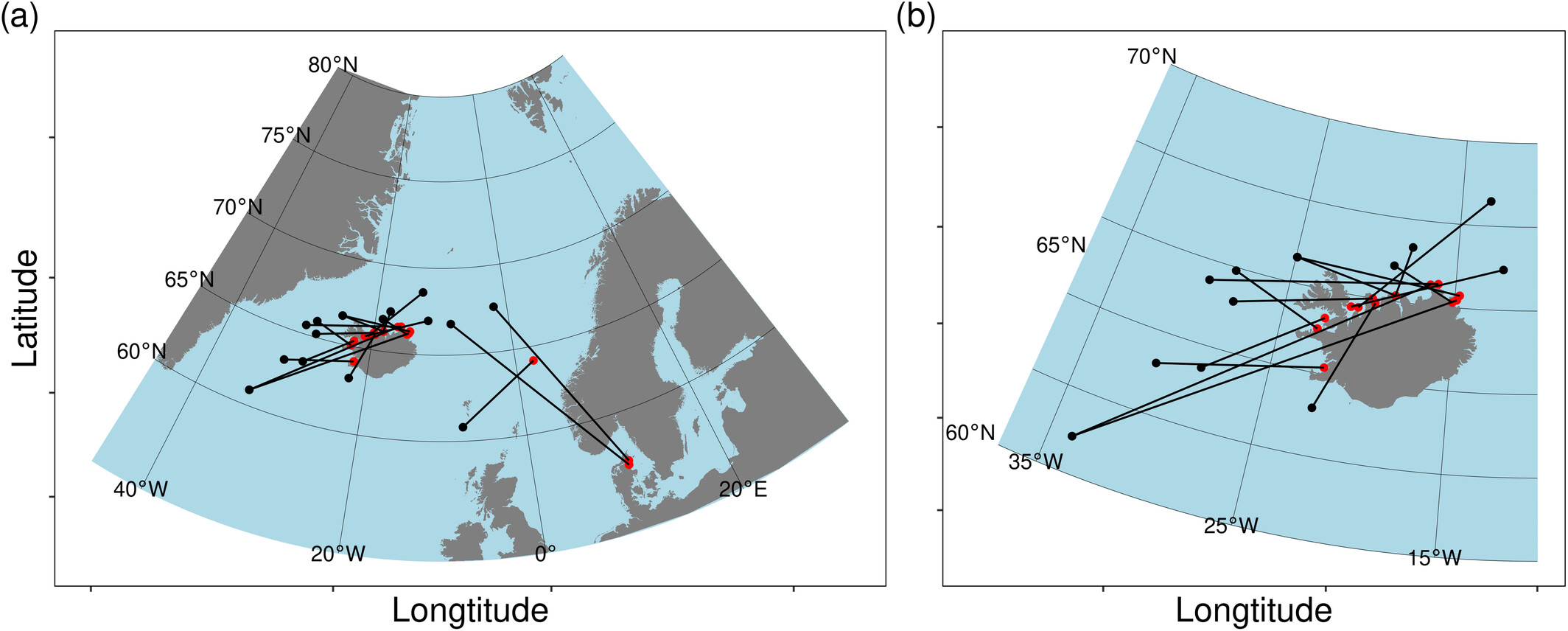- Research
- Fish tagging
- Lumpfish research
- Oceanography
- Seabed mapping
- Arnarfjörður
- Drekasvæði
- Ísafjarðardjúp
- Jökulbanki
- Jökuldjúp
- Kolbeinseyjarhryggur and adjacent area
- Kolluáll
- Langanesgrunn
- Látragrunn
- Nesdjúp
- Reykjaneshryggur and adjacent area
- Selvogsbanki
- South of Selvogsbanki
- South of Skeiðarárdjúp
- South of Skerjadjúp
- Southeast of Lónsdjúp
- Southwest of Jökuldjúp
- Suðausturmið
- Suðurdjúp
- Vesturdjúp
- East of Reykjaneshryggur
- Vestfjardarmid
- Seal research
- Whale Research
- Advice
- About
Lumpfish is a stronger swimmer than was previously known
22. November 2024
A new article recently published in Journal of Fish Biology reveals that two lumpfish (Cyclopterus lumpus), tagged east of Iceland in the summer, migrated 1510 and 1612 km to Denmark to spawn. It was previously unknown that lumpfish migrate such extensive distances.
Lumpfish tagged in the Irminger Sea were recaptured in Iceland, demonstrating that lumpfish in Iceland use the Irminger Sea as a feeding area. The article also found that the Norwegian Sea is a shared feeding area for several different populations of lumpfish.
Lumpfish frequently migrate over long distances
During the course of the study, 2750 lumpfish were tagged in the Irminger Sea around Iceland and in the Norwegian Sea over 6 years, of which 17 were recaptured. Four individuals were recaptured more than 1000 km distance from where they were tagged, revealing that lumpfish frequently migrate over long distances between their summer feeding area in the open ocean and their spring spawning sites in coastal areas.

Map of the tagging (black dots) and recapture (red dots) locations of Cyclopterus lumpus tagged during the International Ecosystem Summer Survey in the Nordic Seas for the whole northeast Atlantic area (a) and for the area around Iceland only (b).
Lumpfish tagged in the Irminger Sea and north of Iceland were recaptured around Iceland, whereas none of the fish tagged in other areas of the Norwegian Sea were recaptured in Iceland. This difference in recapture rate from different areas suggests that a higher proportion of lumpfish from the Irminger Sea and north of Iceland spawns around Iceland in comparison with lumpfish in other areas.
Two fish tagged east of Iceland were recaptured on the coast of Denmark, with one fish having travelled 1612 km between tagging and recapture location. The recapture of these two fish in Denmark demonstrates that part of the C. lumpus population spawning in Denmark utilizes the Norwegian Sea as a major feeding area and that the Norwegian Sea is a common feeding area for several distinct populations of C. lumpus.

